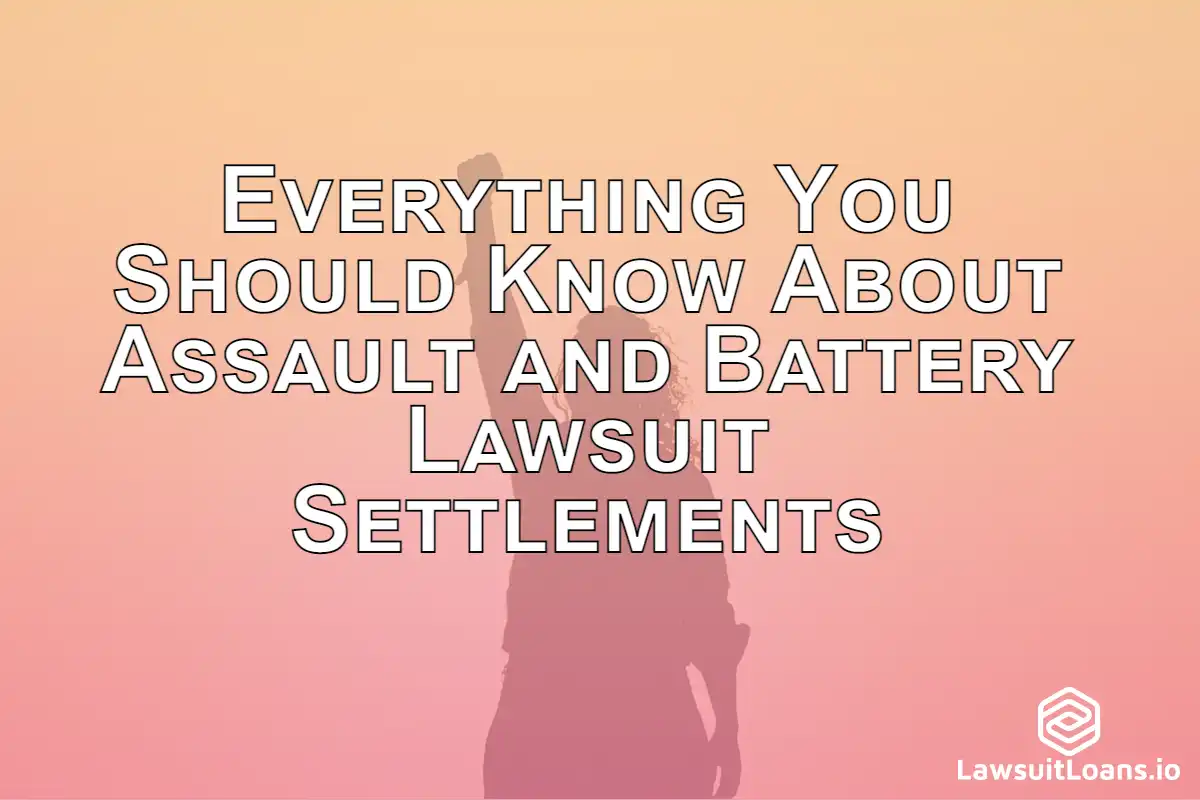Everything You Should Know About Assault and Battery Lawsuit Settlements
Learn everything you need to know about assault and battery lawsuit settlements. This article covers how much you can expect to receive and what factors will impact your settlement amount.




Everything You Should Know About Assault and Battery Lawsuit Settlements
If you are involved in an assault and battery lawsuit, you may be wondering about the settlement process. Know that you’re not alone. Many victims choose to negotiate a settlement instead of proceeding with a trial.
Today, this article will give you everything you need to know about settlements in assault and battery lawsuits.
Apply NowHow Much Are Settlements for an Assault and Battery Lawsuit?
The settlement amount in an assault and battery lawsuit varies significantly depending on the individual case. Factors such as any severe injuries, medical expenses, and state laws will influence the settlement amount.
For minor cases, a defendant can expect to receive a minimal amount, usually enough to cover medical expenses and any other damages related to the incident. For more severe cases, you may be entitled to larger settlement awards.
Get up to $500,000 With Rates as Low as 2.5% Simple, Monthly
What Factors Will Impact My Settlement Amount?
In an assault and battery lawsuit, several factors will influence the amount of your settlement. These include:
- The severity of your personal injury claim
- Medical bills associated with the incident
- Lost income because of time away from work
- Serious injuries or mental trauma as a result of the incident
- Physical pain and suffering endured
- Any punitive damages awarded
Consider all of these things when negotiating your settlement, and seek the legal advice of a knowledgeable attorney to ensure you receive a fair settlement amount.
What Qualifies as Assault and Battery?
Learn more about the different types of claims that fall into this category by reading below.
Assault
Assault is the threat of physical harm to another person without their consent. This includes threatening or attempting to cause bodily injury, sexual assault, and placing another in fear of imminent physical harm. Unlike battery, assault claims do not necessarily involve contact between the victim and perpetrator. An attempt or threat of harm counts towards assault charges. Considering at least 810,825 assaults occurred in 2017 alone, these criminal charges aren’t an uncommon occurrence.
The differentiating factor for assault has to do with intent. If there’s little intent of harm, then the lowest charge of assault is applied. However, if the intent to cause harm was clear and serious, a more severe charge could be brought against the perpetrator.
Third-Degree Assault
Third-degree assault is the least serious type of assault charge. Generally speaking, it occurs when a person “recklessly” attempts or threatens to cause physical injury to another person. The person may not necessarily intend to cause harm but is still held responsible for their actions. This charge is typically classified as a misdemeanor, and the penalties are usually fines or even up to a year of jail time, depending on the state.
Second-Degree Assault
Second-degree assault is one step up from third-degree assault. Compared to third-degree assault, this occurs when a person “knowingly” attempts or threatens to cause physical injury to another person. So the person must have known that their actions could cause harm. Depending on the state, this type of assault is usually classified as a felony, and penalties can include up to seven years of jail time and fines.
First-Degree Assault
First-degree assault is the most serious type of assault charge. This occurs when a person “intentionally” attempts or threatens to cause serious physical injury to another person. As such, the perpetrator must have had the intention to cause harm. This charge is usually classified as a felony. It may involve harsher penalties, including extended jail time of up to 25 years and considerable fines. This is dependent on the state you live in.
Battery
Battery is the intentional or reckless use of force or violence against another person. It includes unlawful physical contact such as punching, slapping, or kicking. Unlike assault, a battery case requires physical contact between the victim and perpetrator. Typically, battery and assault are charged together. A person will usually threaten to attack someone and then follow through with their threat. Rarely does battery occur without some verbal threat beforehand.
The degree of battery depends on the severity of the physical contact and resulting injury. So minor battery charges may include less severe physical contact, like a slap or shove, whereas more serious battery charges may involve the use of weapons and can result in serious bodily harm.
Third-Degree Battery
Third-degree battery is the lowest degree of battery charge. This occurs when the damage inflicted on the victim is minor and doesn’t cause serious bodily harm. This charge is usually classified as a misdemeanor, with penalties that include up to $2,000 fines or jail time ranging around 6 months.
Second-Degree Battery
Second-degree battery is more severe than third-degree battery. This occurs when the damage inflicted on the victim is more serious and can include permanent injury or disfigurement. Weapons may be involved as well. This charge is usually classified as a felony and may have harsher penalties, such as extended jail time of at least two years.
First-Degree Battery
First-degree battery is the most serious type of battery charge. This occurs when the damage inflicted on the victim is extremely serious and can include permanent injury or disfigurement. Weapons, including firearms, may be involved. This charge is usually classified as a felony. It may consist of harsher penalties such as extended jail time that can be anywhere from 5 or more years to life.
Get Started
Apply today and get funds in as little as 24 hours!
Receiving Assault and Battery Settlement Funding
The timeline for receiving a settlement depends on many factors, such as the case’s complexity and the settlement type. Generally speaking, you should receive your financial compensation somewhere between one and two months after settling your case.
However, delays can occur for several reasons such as disputes over the settlement amount or a lengthy appeals process. If you need funds faster, there are options for legal funding. For example, lawsuit loans can provide you with the cash you need while you wait for your compensatory damages.
These types of pre-settlement funding are offered by third-party lenders who assess your case and then provide you with a loan based on the amount of your expected settlement. Conveniently, your credit score or income level is not considered in these types of financing. Lawsuit loans may be an option if you need funds before your settlement comes in.